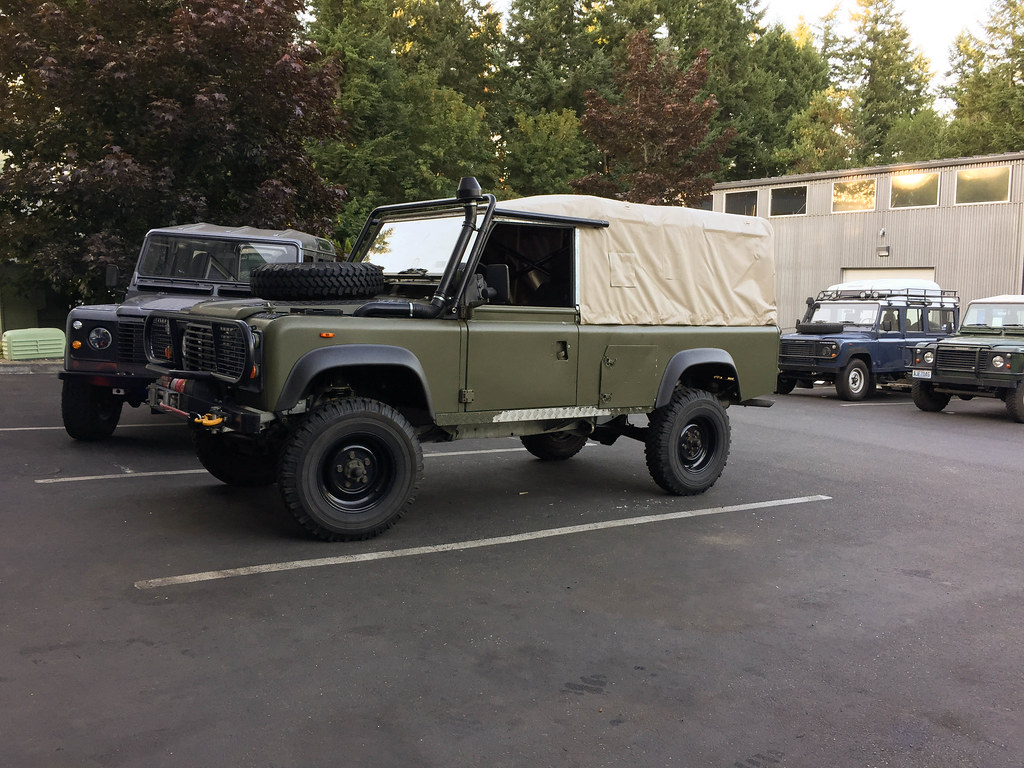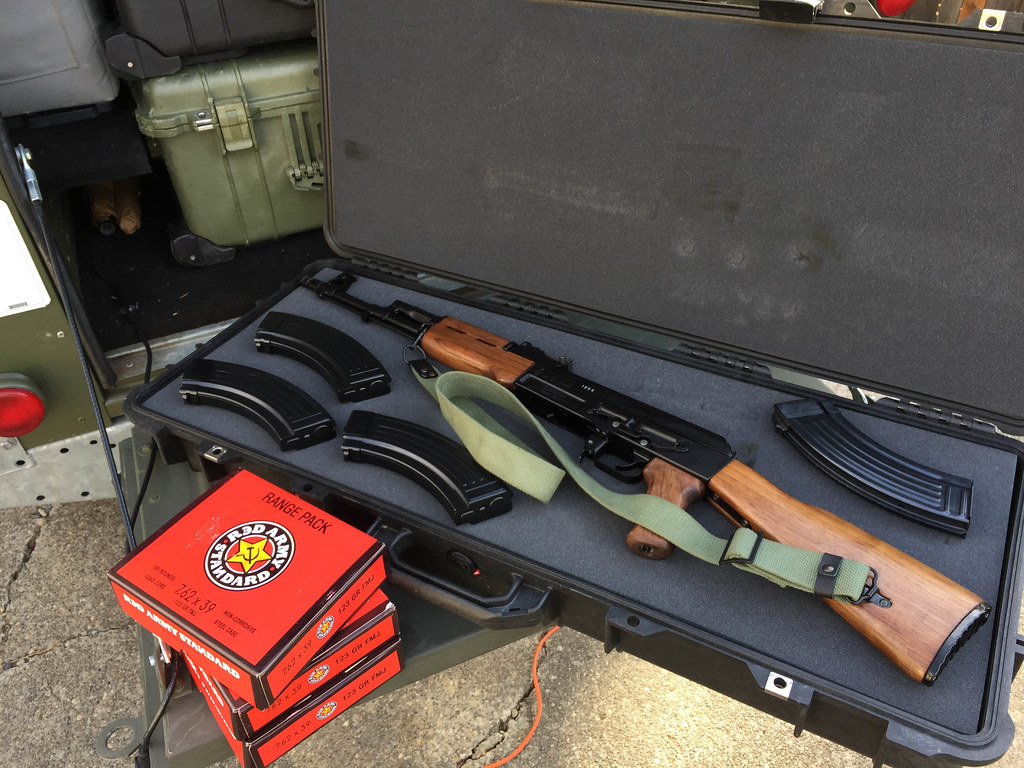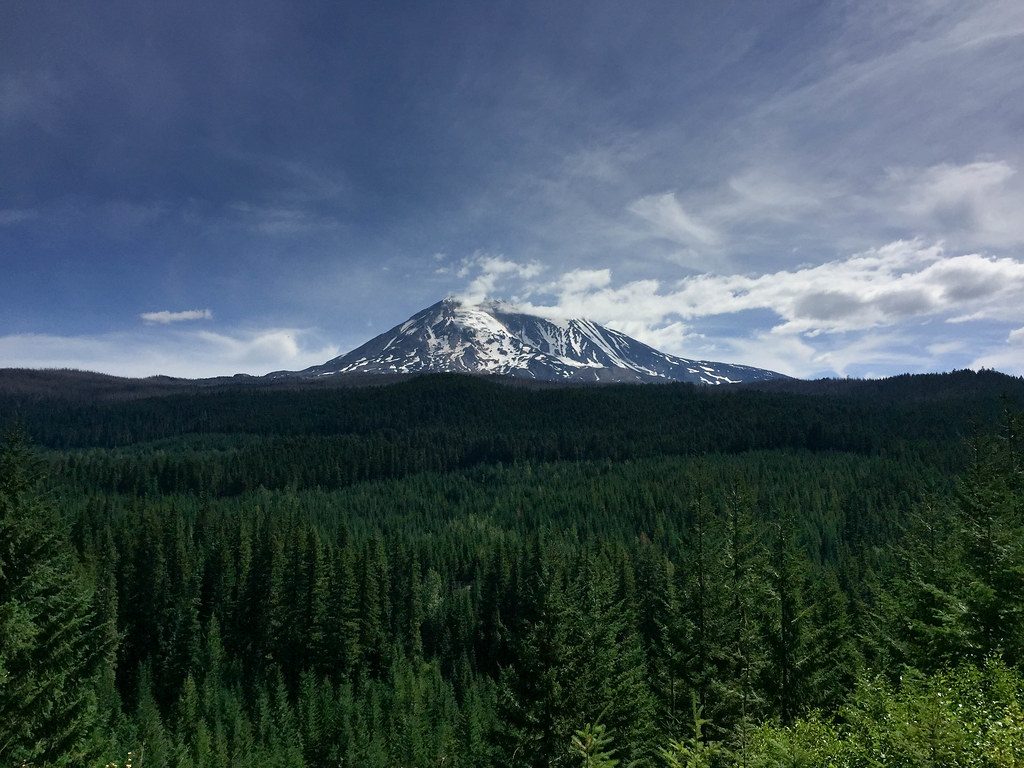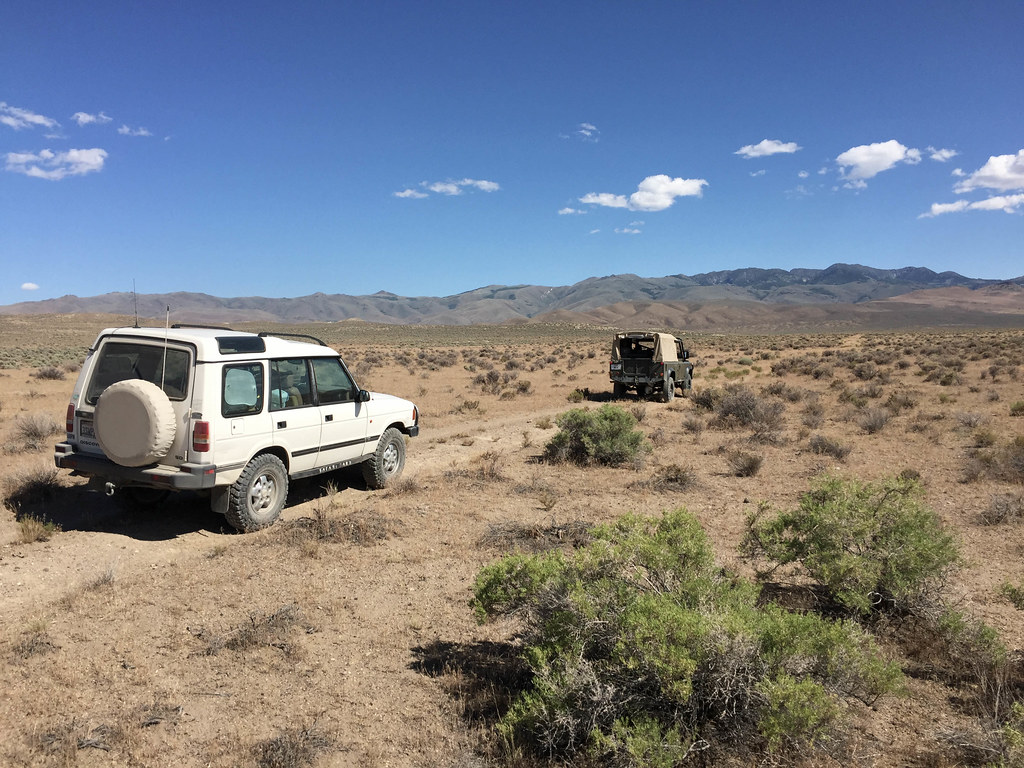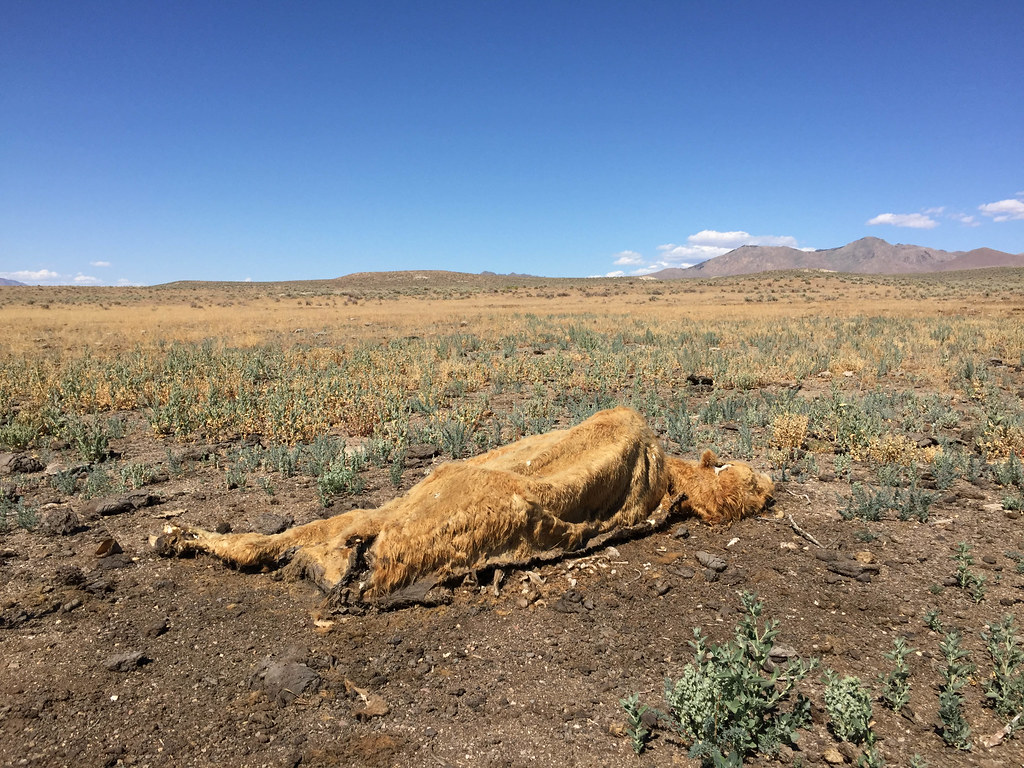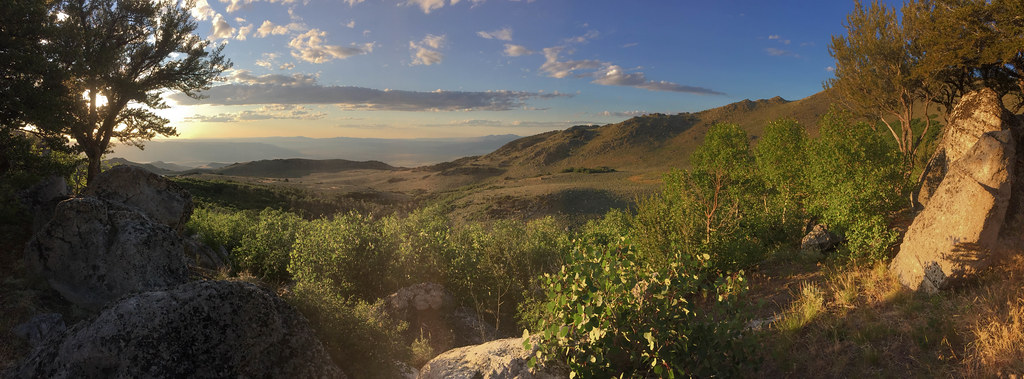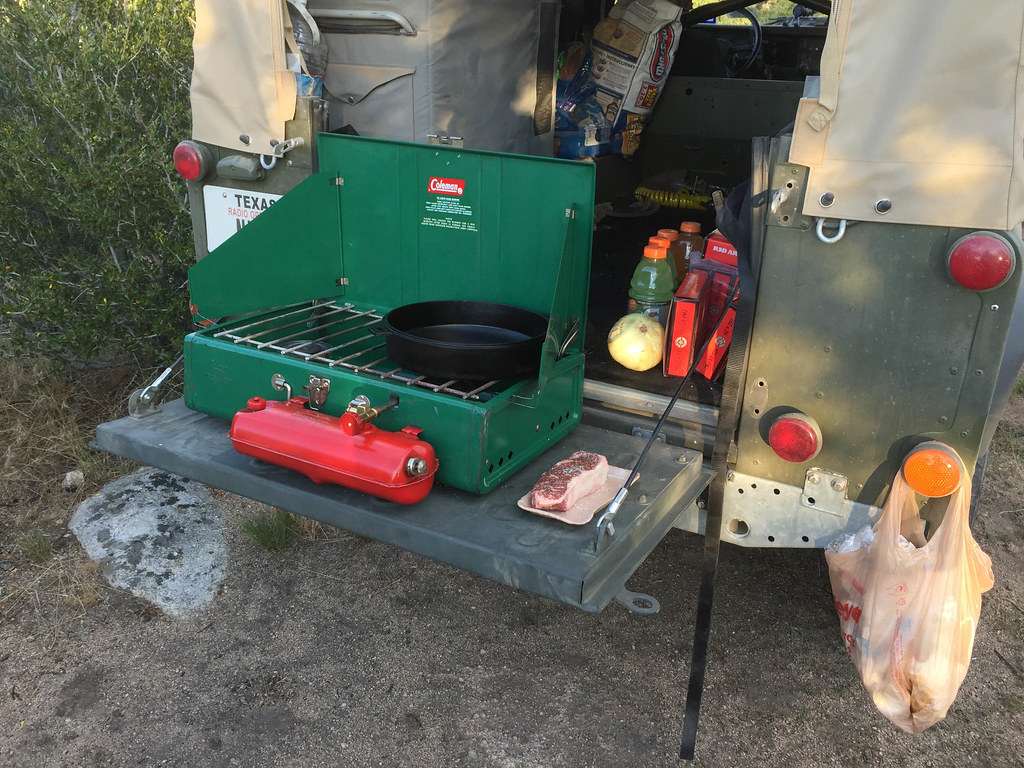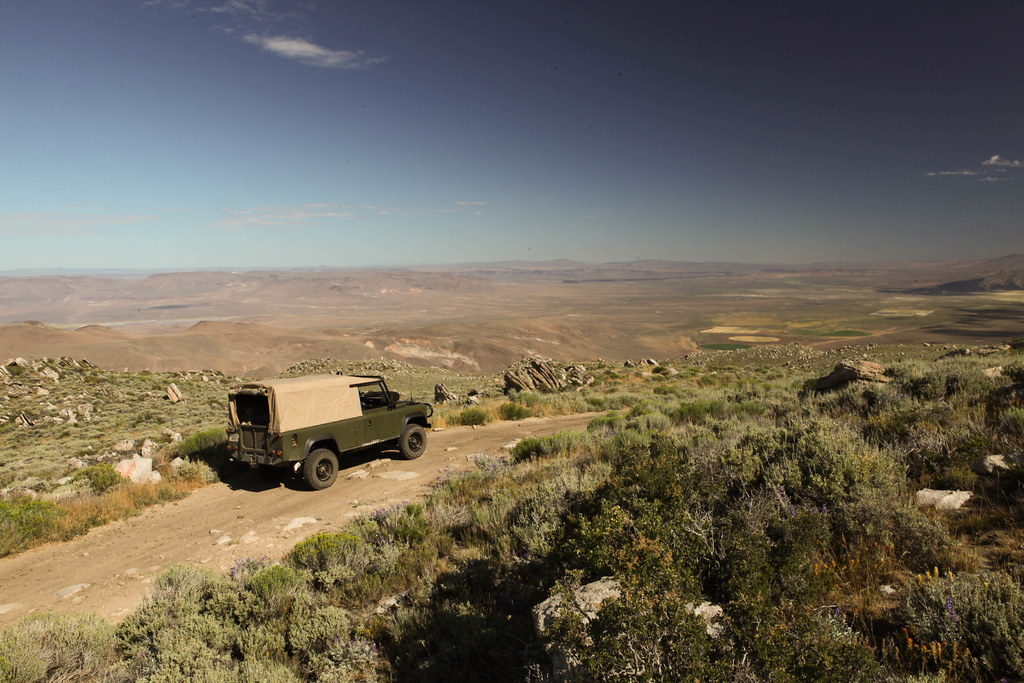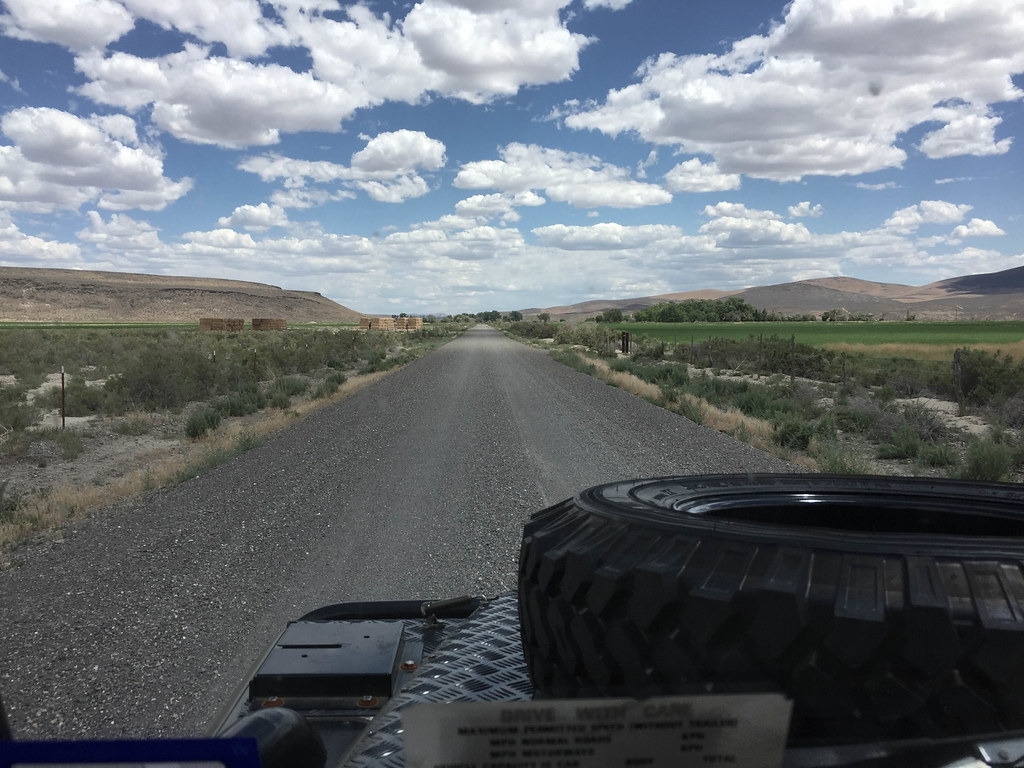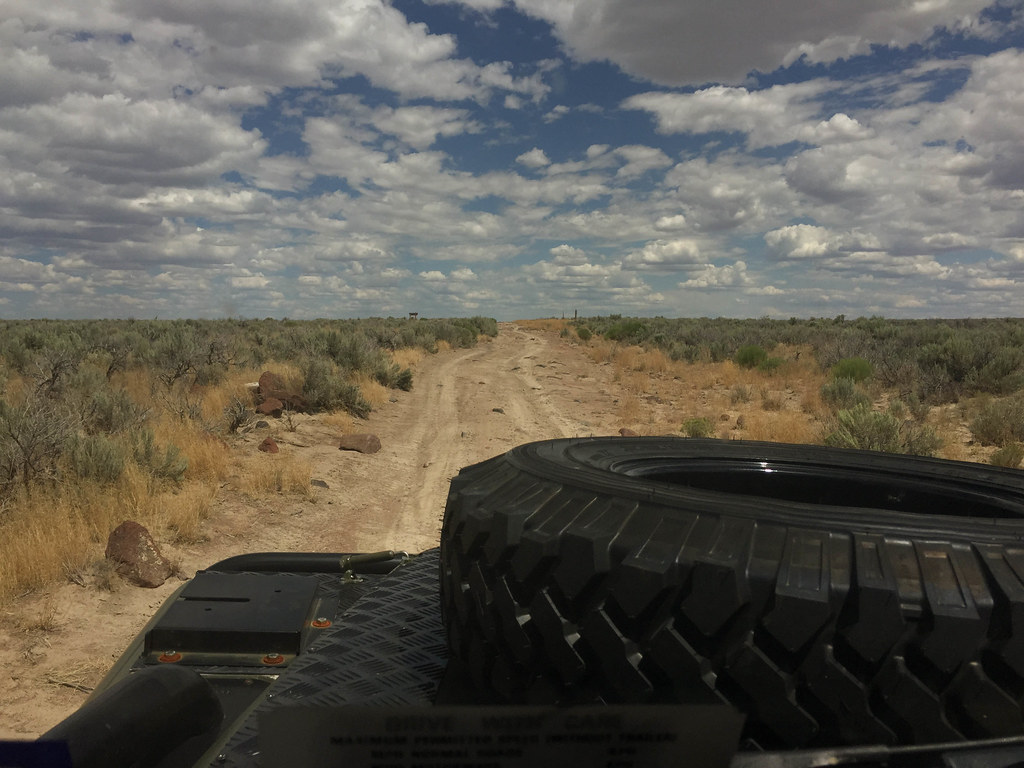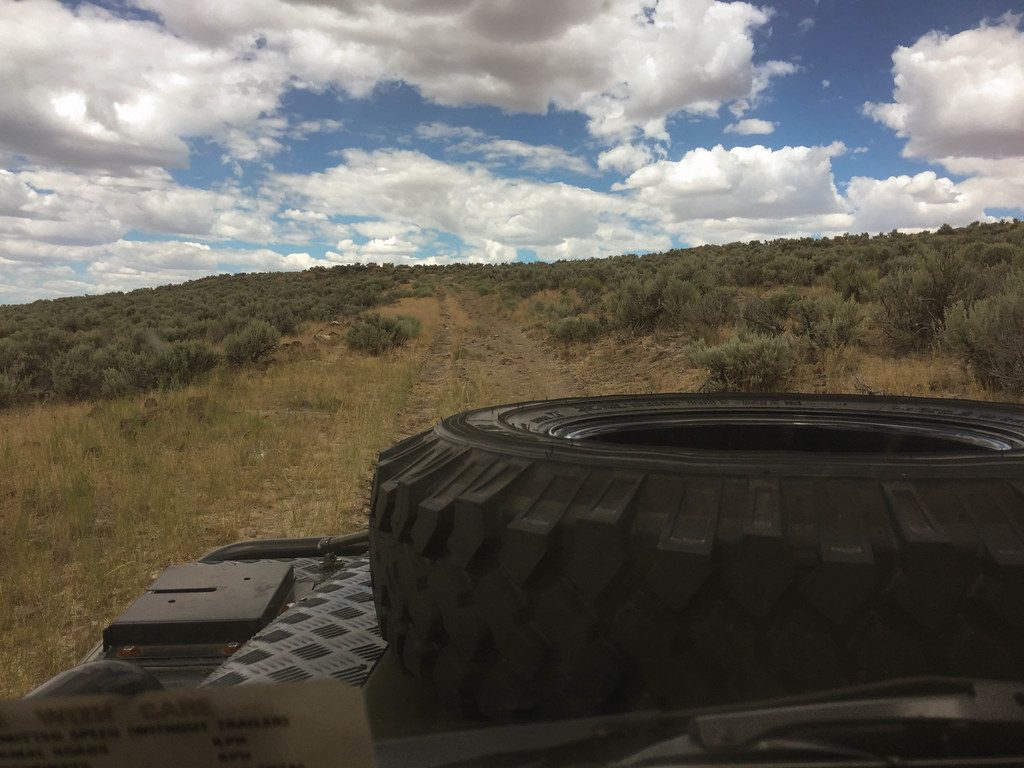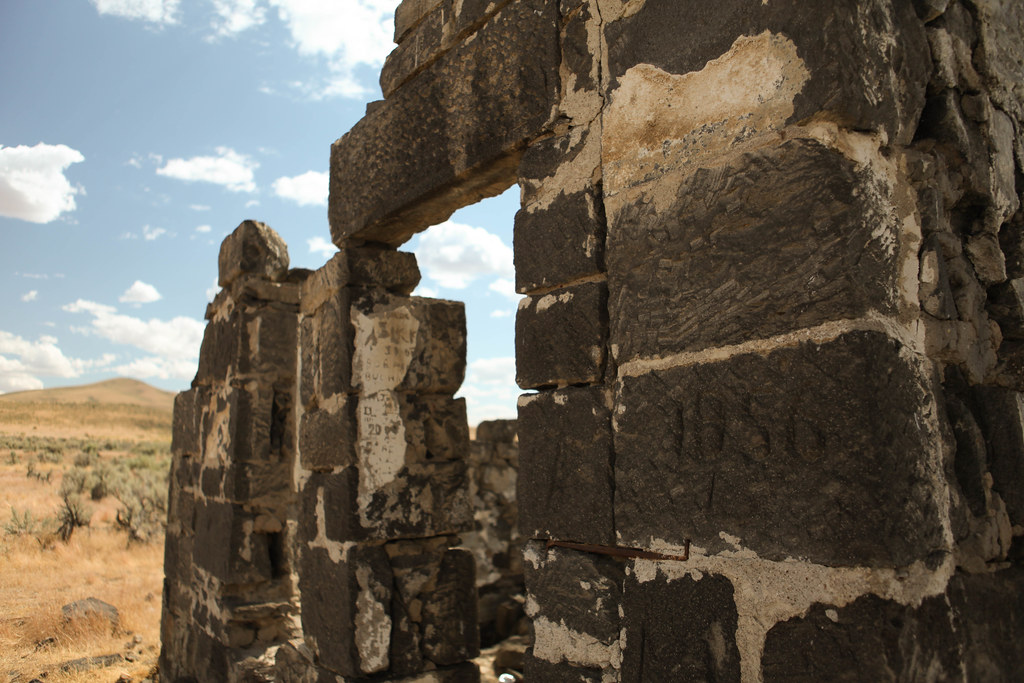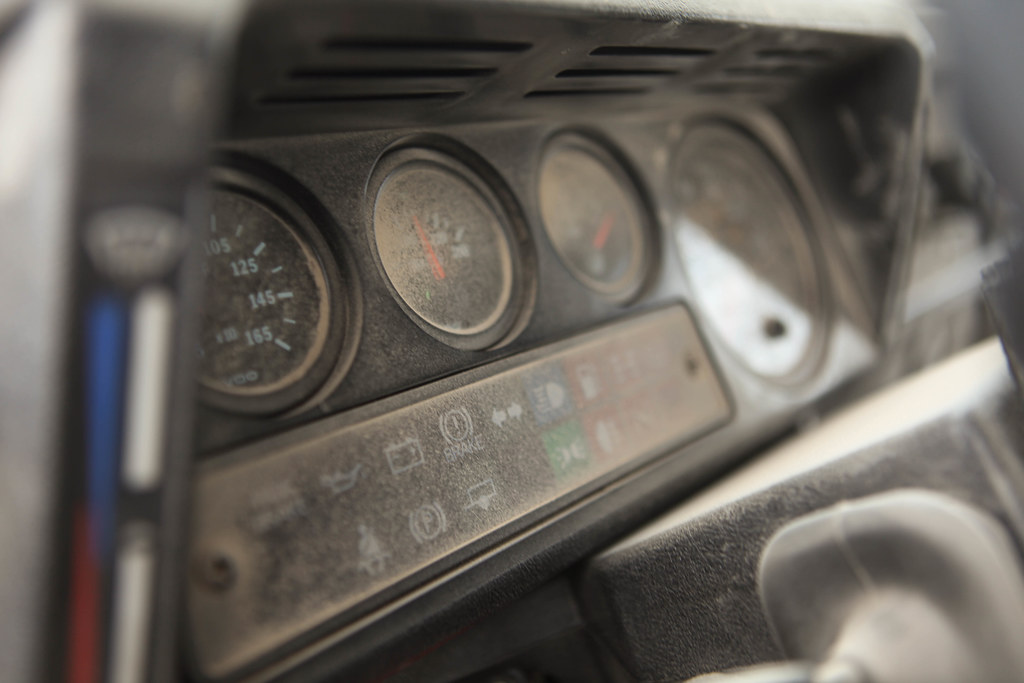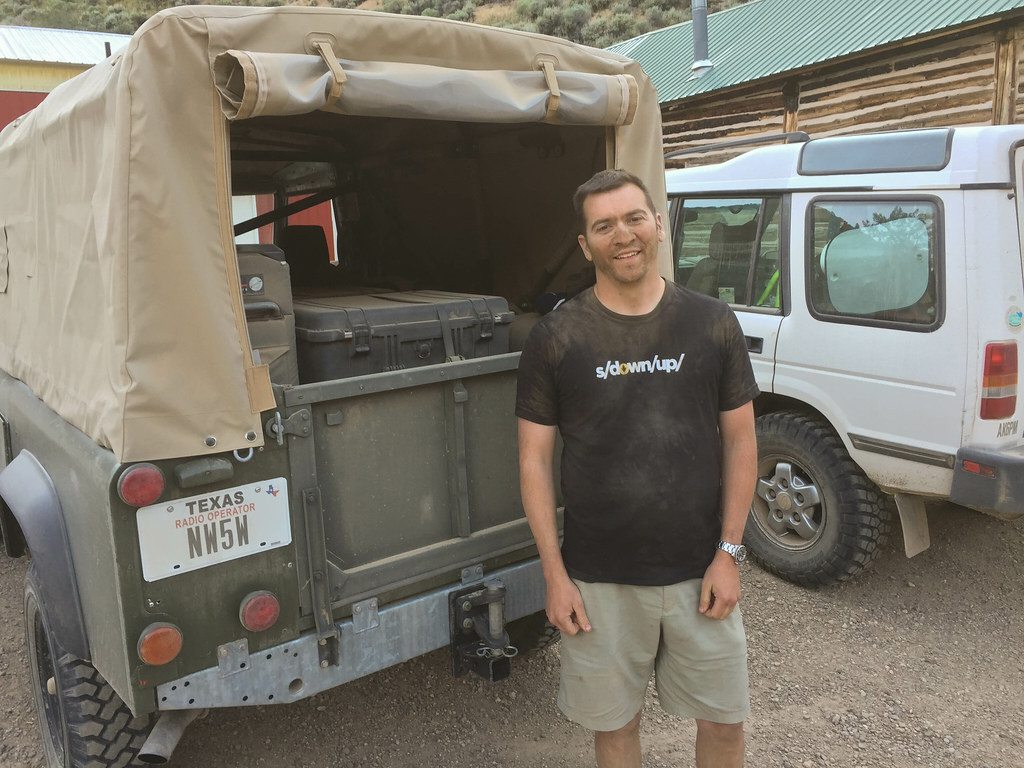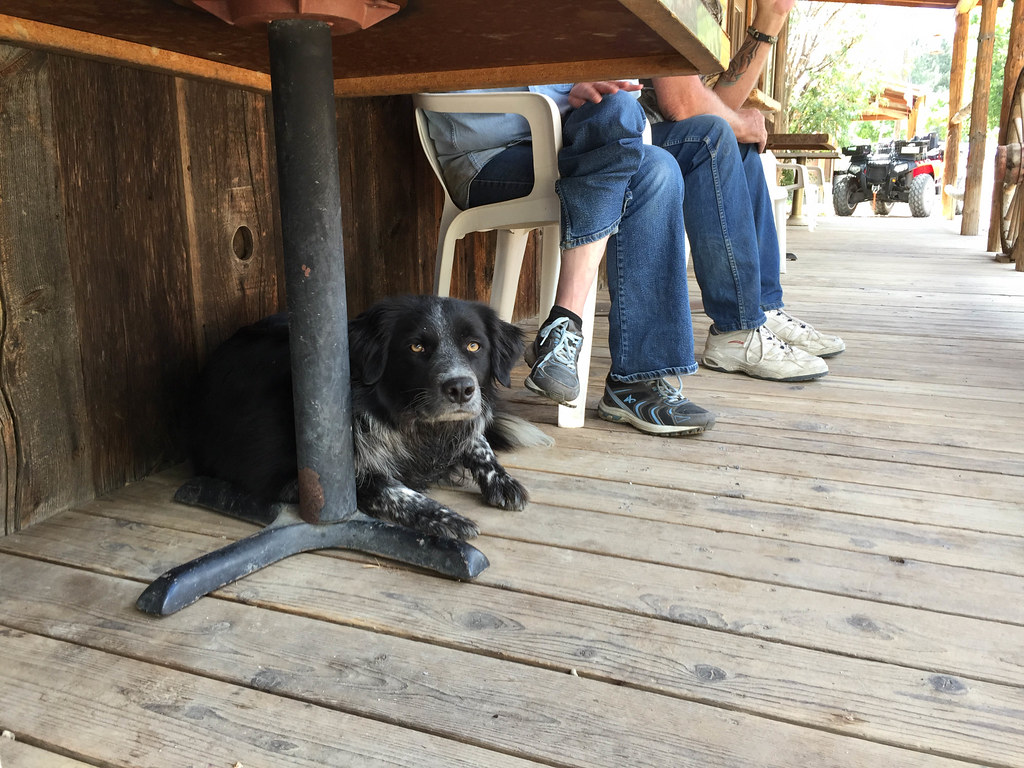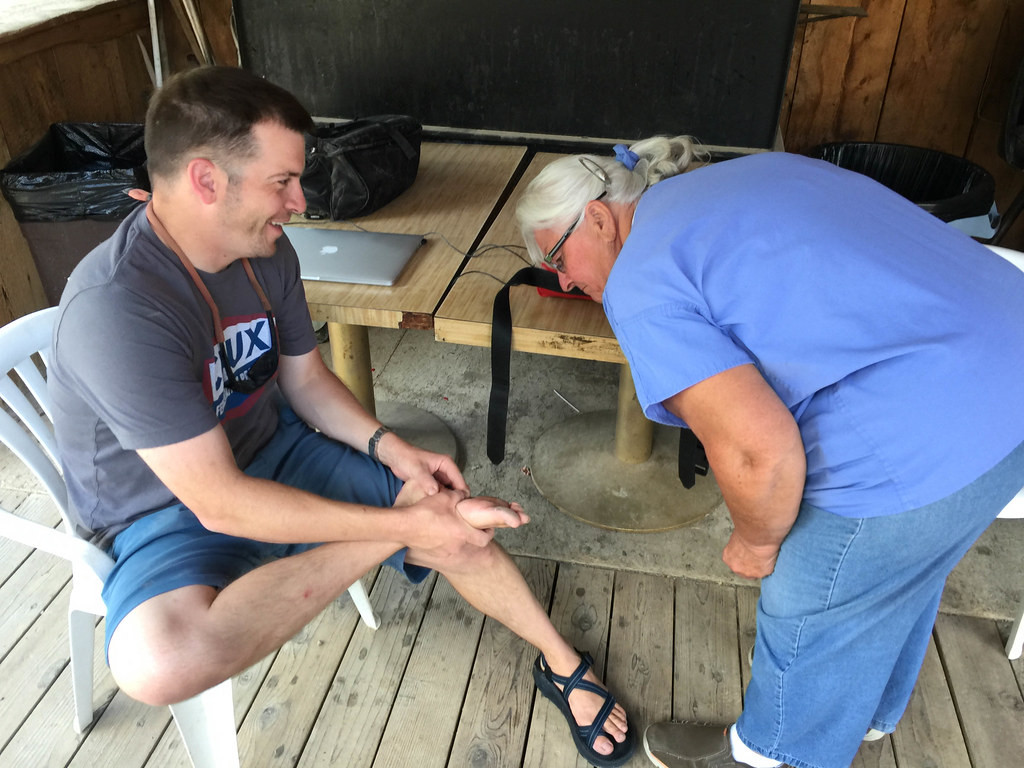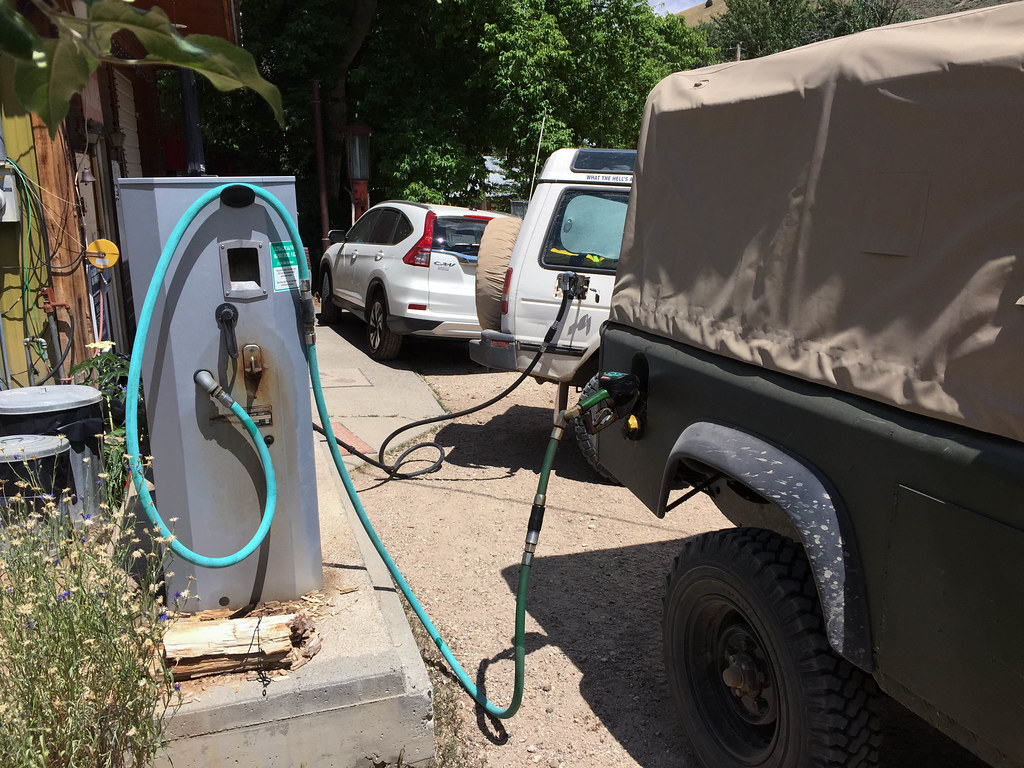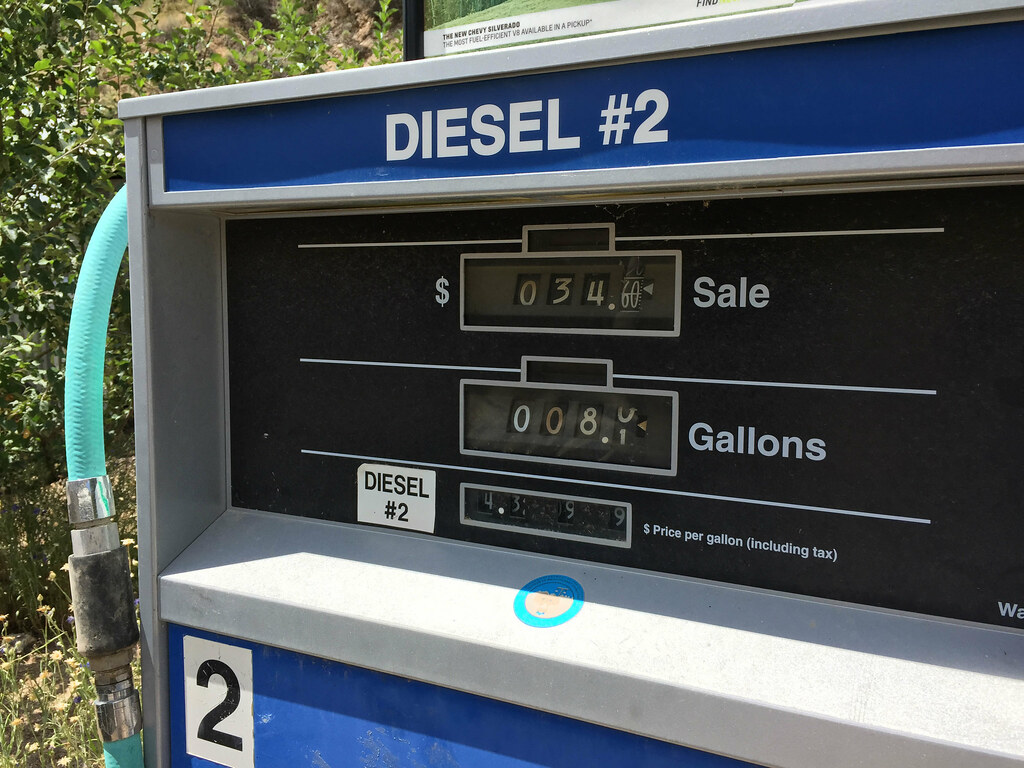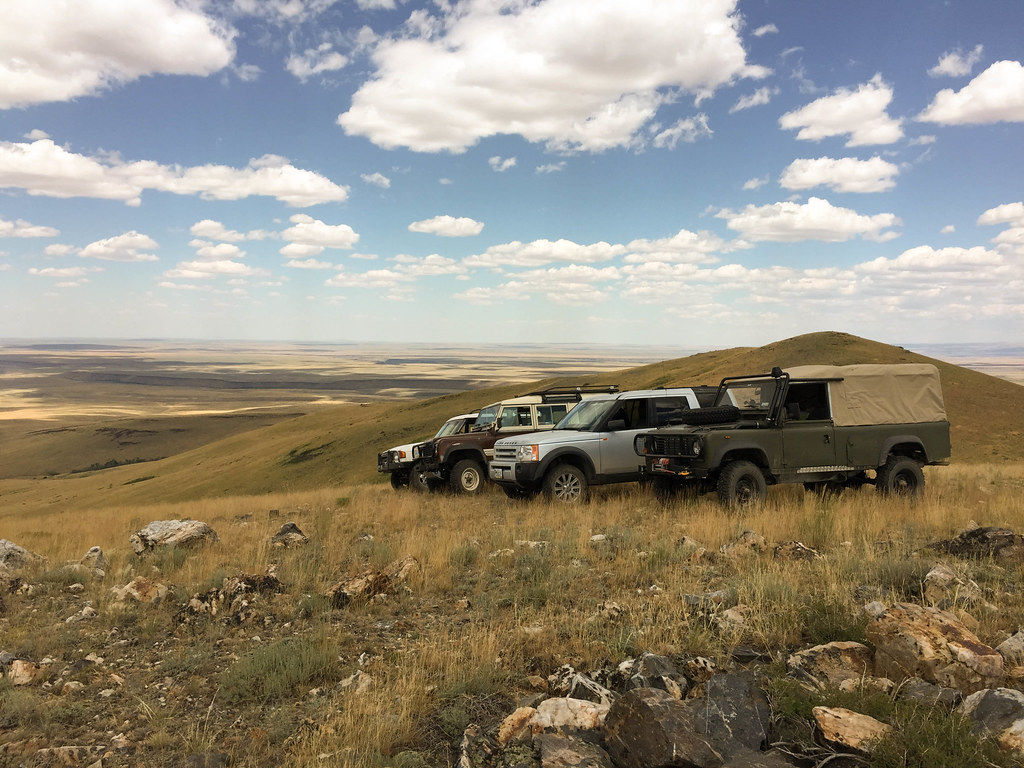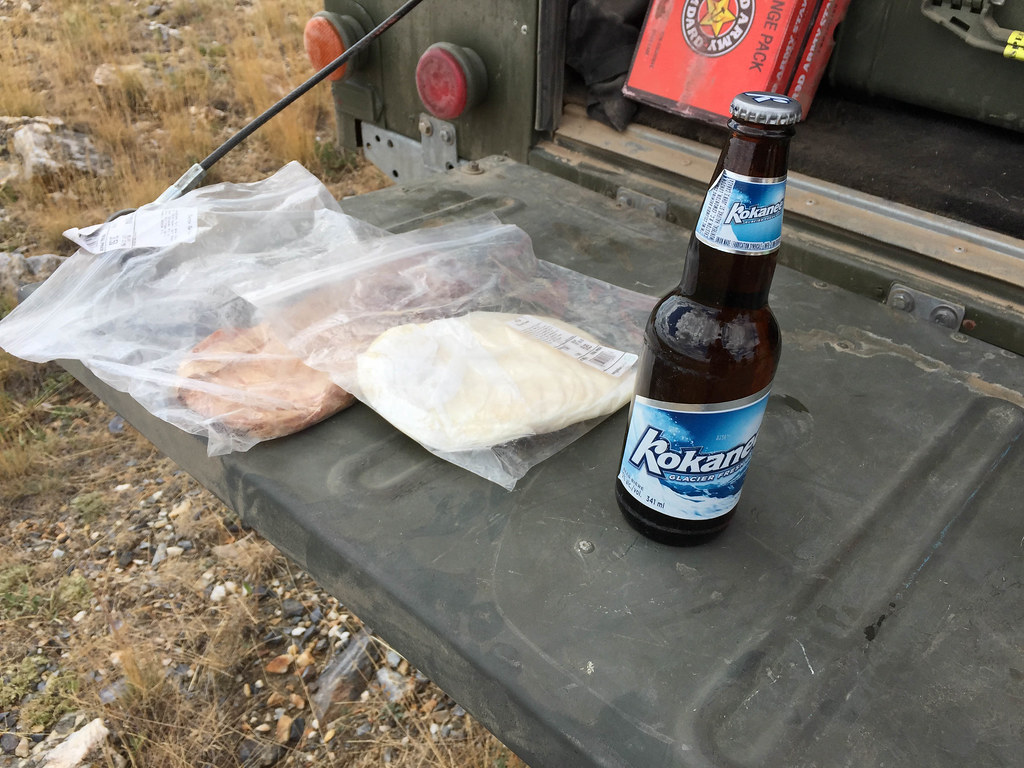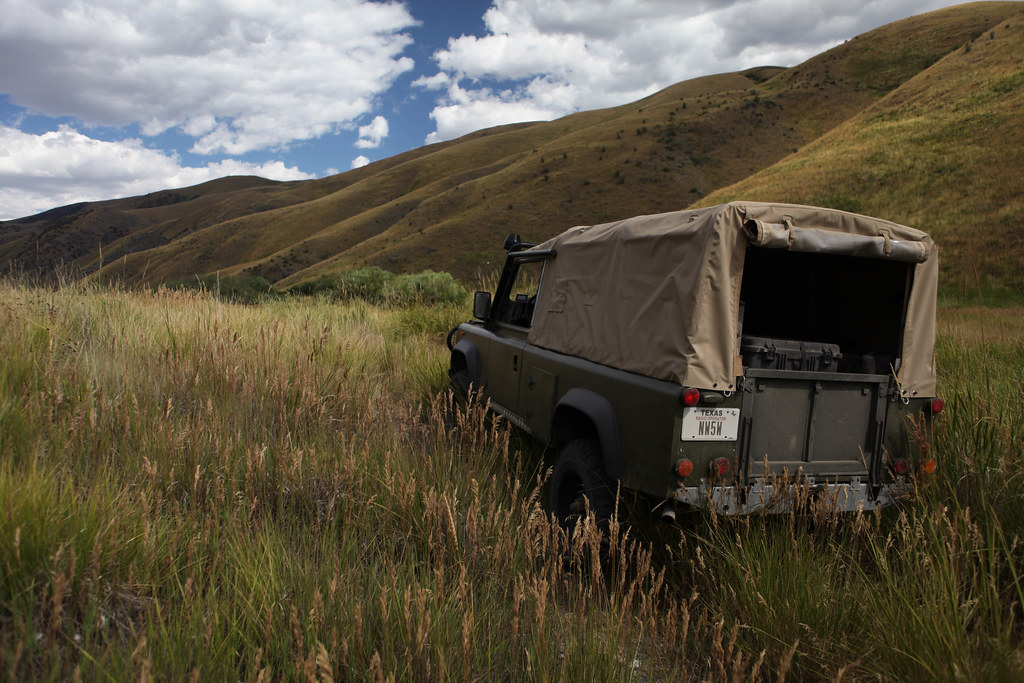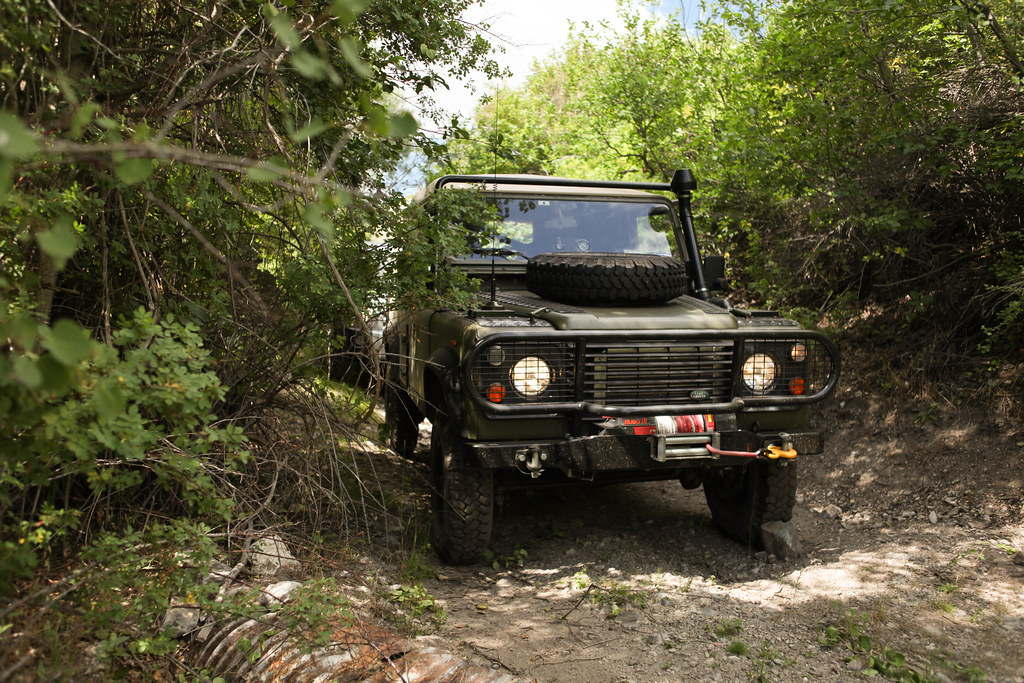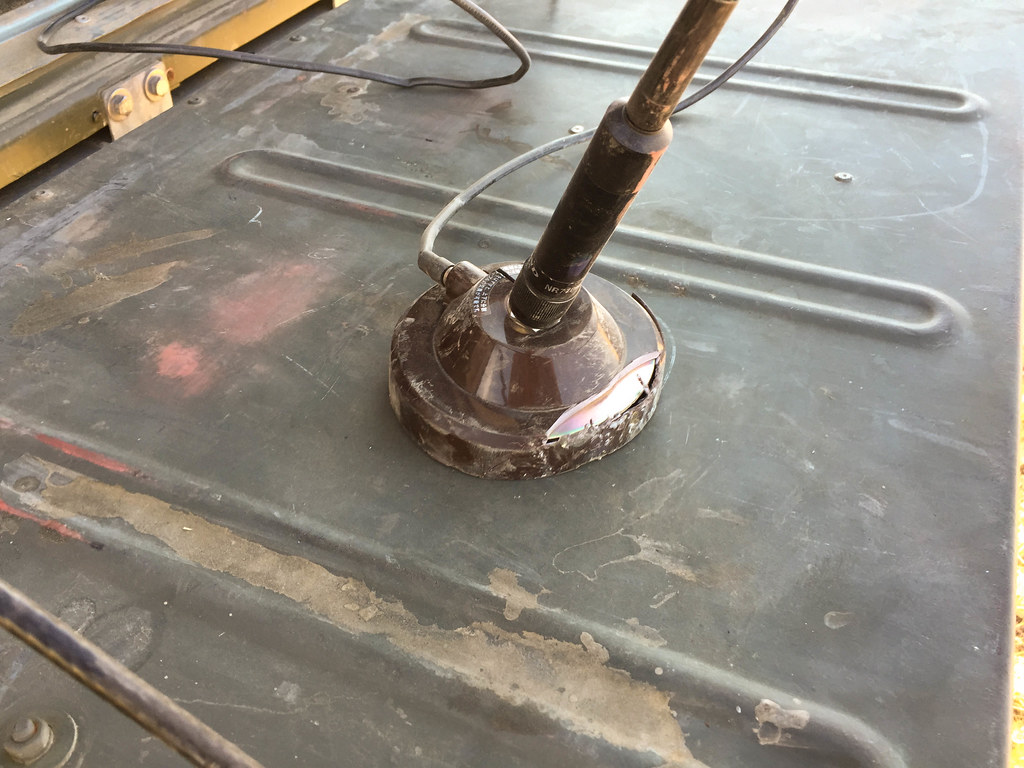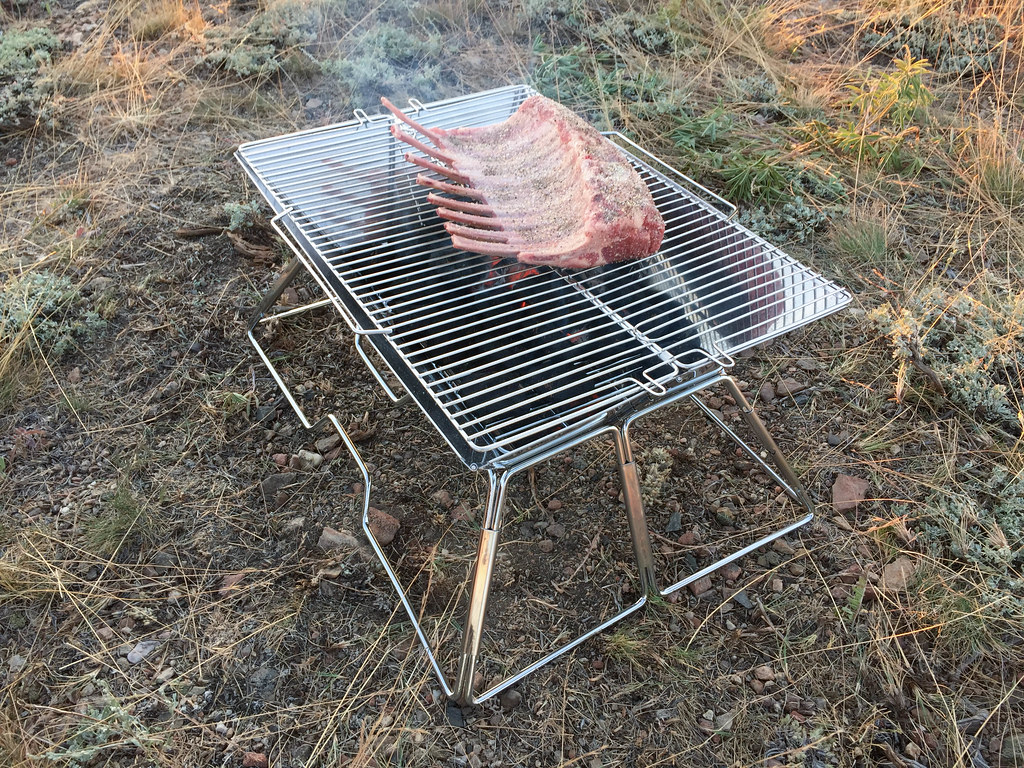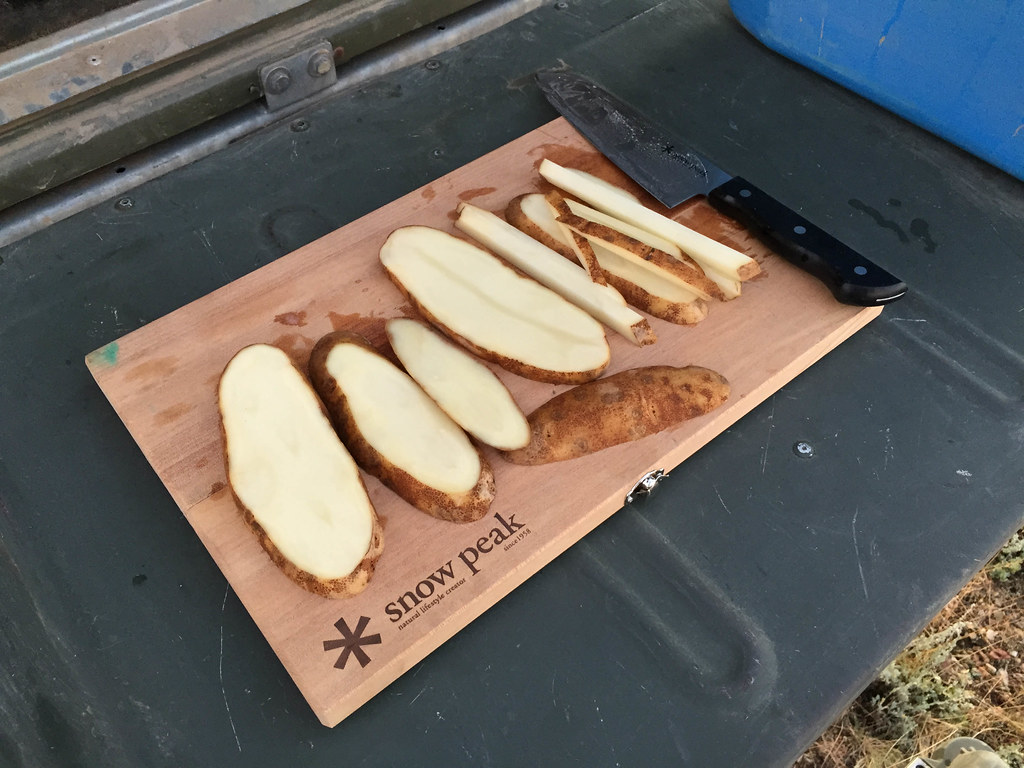chris snell
Member
I recently spent ten days with a few friends in the Owyhee Desert of Nevada, Idaho, and Oregon, scouting the first six sections of a larger route that I've been working on for several years now.
The plan called for the larger Utah Rovers crew to meet up in Salt Lake and drive northwest but as the date approached, the crowd dwindled. It's hard to take ten days away from family and work and so--in the end--we only had a quorum of amigos for a night of camping and an afternoon of driving. The other nine days were a minimalist affair--just Peter and I driving as a duo through what one of the least populated and most isolated areas of the Lower 48.

The major streams and rivers of the Owyhee desert. Our route took us across most of these.
The Approach
After eleven years of doing these trips, I finally feel like my preparation is becoming systematic. There were no late nights of furious last-minute packing this year. I had my Pelicans planned and packed weeks ahead of time. The week before departure was relaxed and spent making a few tweaks to the 110.
I had sworn never to **** with the factory suspension of this truck but adding the 300Tdi, Husky 10 and Brownchurch onto my old, saggy front springs left my front tires with only a few inches of clearance beneath the fender wells. My shocks were also blown so I decided to replace them with some new OME Nitrochargers and decided to swap springs while I was in there. Following Jack's lead, I went with OME 755s in the rear and 766s in the front. My initial impression of this choice was not good. These springs ride like total crap when unladen on the road--the truck is nearly undriveable as such. Load the truck down with six heavy Pelicans, a fridge, and four full fuel cans, however, and it's a completely different experience. The ride is still mildly harsh in the really rough stuff but the truck sits level when loaded and remains stable on uneven double-track at speed. I like it.
I also ditched the goofy, insufferably hot fiberglass top and installed a MOD-spec PVC Wolf top from Exmoor. It took me quite some time to chase down the new top because mine is a Tithonus 110 and Exmoor believed that the Wolf top was not compatible with my roll cage, which differs slightly from that of the Wolf's. Brian Hall and I suspected that the differences could be overcome and I decided to take a $1,000 bet and airfreight the Exmoor top from the UK. The modifications turned out to be trivial and in short order, my 110 had a new summer get-up:
With the truck sorted, I finally got around to finishing the IWD furniture for my SAM7R and got them installed in time to bring the rifle along. It's a tung oil finish on American walnut. Hardly traditional but neither is the milled SAM7R.
The drive down to the desert was improvisational--Peter and I weren't sure how quickly we'd be going so we decided that he would head north and I would head south and we'd meet someplace in the middle. I avoid interstates so I left pavement as quickly as possible, taking a dirt road that connects the Puget Sound with the Columbia River by way of Mount Saint Helens and Mount Adams:
I camped high in the Cascades that night and continued south into Oregon the next morning, stopping to pick cherries in the Hood River Valley before continuing on to Bend for dinner and a fuel-up. South of Bend, I turned east onto a small state highway and made my way towards US-395, where I would meet Peter.
South-central Oregon is under-appreciated and truly stunning. It is reminiscent of the northern flanks of Utah's Aquarius Plateau with its high-altitude hay farms and lakes and empty roads. I vowed to come back to spend more time in the area but I had miles to cover and it was getting dark and cold. The music for the night was Jerry Jeff Walker's seminal, self-titled 1972 album; I stopped on the side of the road to change into warmer clothes and pressed on into the night.
Late that evening, Peter and I finally crossed paths in tiny Valley Falls, OR. Exhausted from our long days, we decided to forgo campsite hunting and spend the night in a quiet and entirely empty RV park in the center of this one-intersection town. After a quick meal of sausages and a San Diego beer, I set my tent up on the grass and was asleep within minutes.
The first morning after link-up is always my favorite part of a trip. I made my standard trail breakfast--oatmeal--and we studied the map. We had two days to make it the roughly 400 miles to Jarbidge, NV, where we would meet the rest of the gang. We decided on our destination for the day: a promising-looking flat spot on top of a high range overlooking Nevada's Black Rock Desert below.
Heading east out of Lakeview, we crossed the Sheldon National Antelope Refuge and passed herds of skittish pronghorn out in the sagebrush. I thought of Cormac McCarthy and Llewelyn Moss's "heavybarreled .270 on a '98 Mauser action".
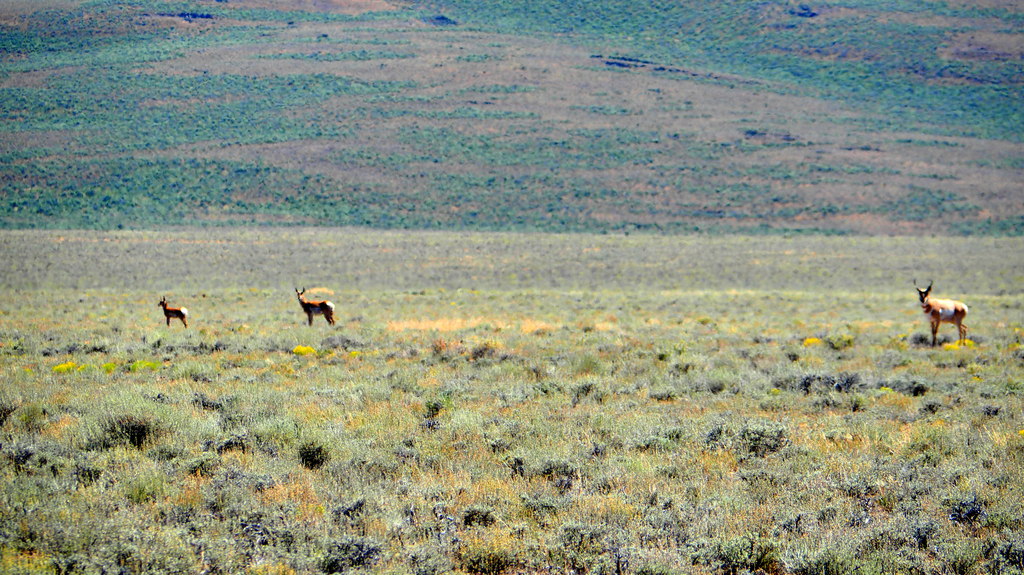
Photo by Peter Matusov
Turning south across the desert, we made our way down to Black Rock country and approached the desert range that was our destination.
I did some USGS topo scouting and found an old 4x4 road to the summit. We followed this for a while, passing a dried-up cattle trough and the desiccated remains of a heifer lying next to it. This is tough, unforgiving country.
Shortly past this, we came upon a No Trespassing sign. Looking down the road, we could see a ranch house in the distance and a tractor working a hay field. This is Cliven Bundy country and we thought long and hard about the risks of rolling up on somebody's private homestead and asking for permission to pass through. Unable to decide, we flipped a coin: we would either head in or turn tail and find another route. Heads it was and so we proceeded slowly up the drive, maintaining one hand on the wheel and one on the outside of the door, trying to appear as non-threatening as possible. I spotted the rancher and rolled up to him slowly. "Hi sir, sorry for the tresspass. We're heading up to the summit and I was hoping to follow the road up from your property if you would allow us to pass through.", I sheepishly said. His response was to the point: "No." I apologized and said we would leave the way we came. As we were leaving, he must have decided we were okay because he stopped me to direct us toward a turn-off a few miles off his property where we could find a trail that would eventually make the summit.
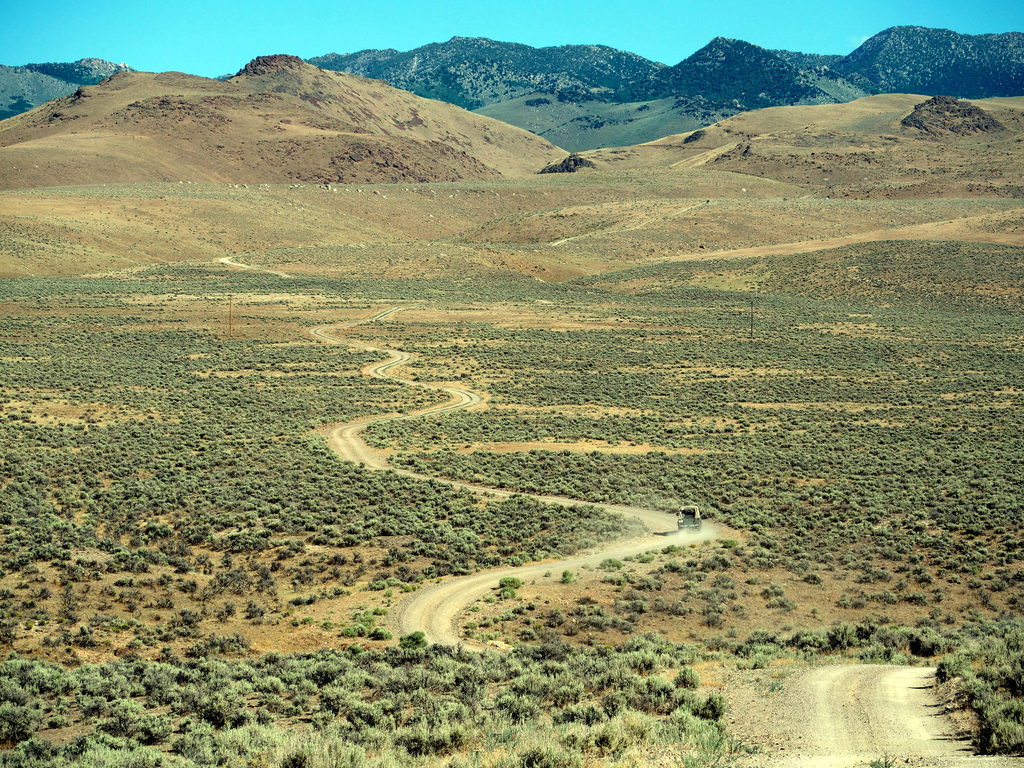
Photo by Peter Matusov
The gravel gave way to doubletrack and give us our first taste of Owyhee volcanic travel. It was, at times, quite washed out and rutted. My truck is still running open differentials; unlike my previous D90 where I immediately built it up, I've been proceeding slowly with the 110, focusing on using technique in lieu of equipment when possible. It was slow-going on a few of the steeper stretches of this route. There were a few times when I would have to reverse and make a second run at an obstacle.
We finally gained the summit about an hour before sunset and set about scouting a place to park and camp. There was a more heavily-used area with a pit toilet that the BLM had installed. This area was occupied by some Jeepers with a large herd of kids and women so we continued driving, looking for something a little more quiet. That's when we stumbled upon what might be one of the finer campsites in Northern Nevada:
We set up camp and prepared dinner in the fading light. I fired up my 1964 Coleman stove on the newly-installed tailgate of the 110. This tailgate is my most favorite part of the new soft top setup--in ten years of Defenders, this is my first one with a built-in table.
We ate New York strips and watched an incredible sunset over the desert floor 3,500' below.
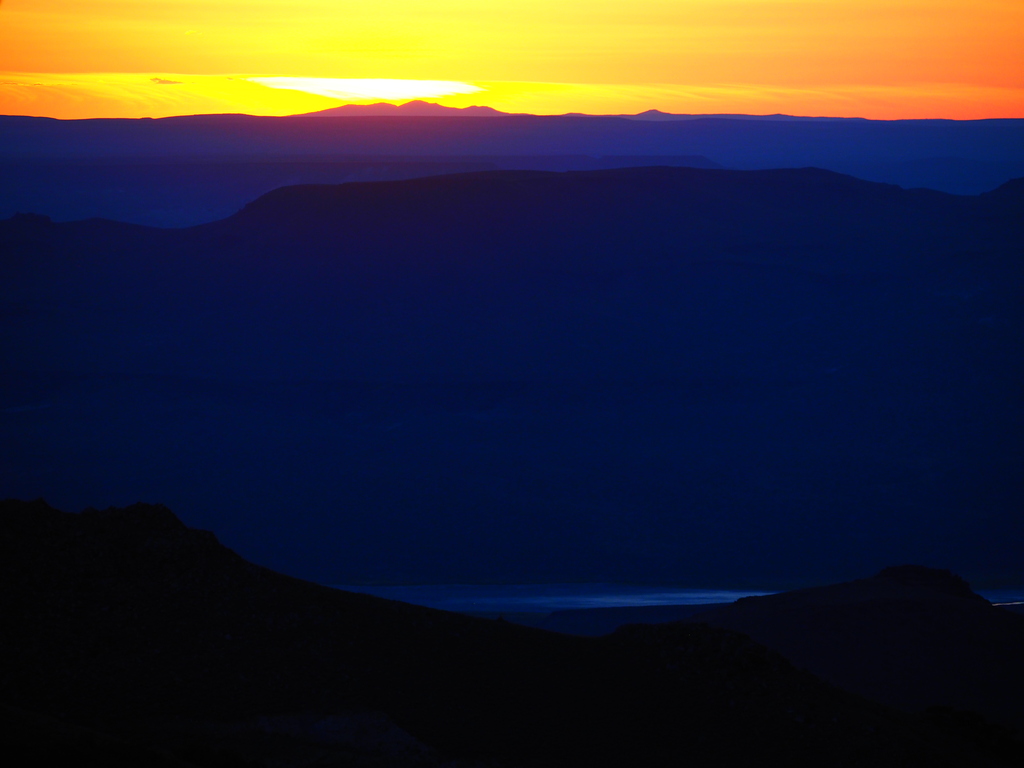
Photo by Peter Matusov
After dinner, I tried my best to hang with Peter and drink a little whiskey but I was tired and decided call it an early night. We racked out, Peter on a platform in his Disco and me opting for my Thermarest thrown down on the tub floor of my 110.
The next morning, I wake up and begin my morning routine--heat water and grind coffee in the Zassenhaus, only to realize that I somehow forgot my Frieling french press at home. This was a huge bummer. Trail coffee is one of my most favorite things about doing these trips and I was a long way from a Bed Bath and Beyond. Instead, my Stumptown Hairbender beans were not-so-secretly replaced with Peter's Folgers crystals.
Before breaking camp, we took a hike up to a mountain lake near the summit.
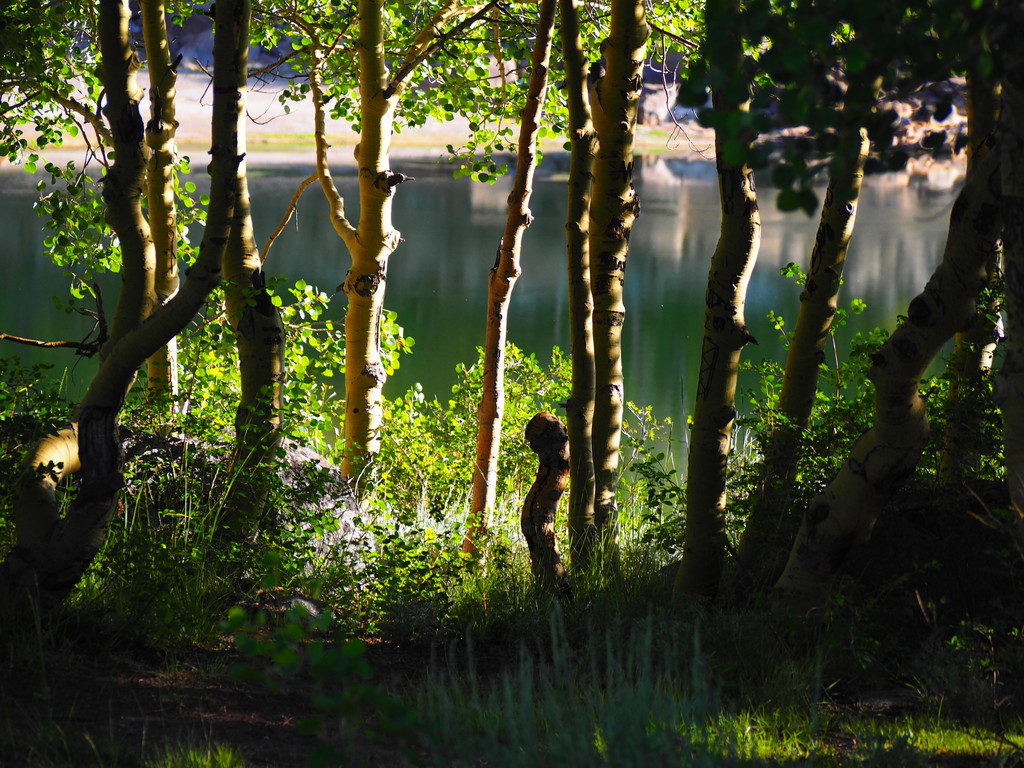
Photo by Peter Matusov
Like a labrador retriever, if there's water, I'm going to swim in it. The lake was snow-fed and quite cold but refreshing on this quickly warming July day. On the way out of the water, I cut my foot deeply on a piece of broken glass. I didn't notice it until I got back to the campsite. I should have taken care of it and patched it up but I didn't and just put my flip-flop back on. This would come back to haunt me in a few days.
260 Miles to Jarbidge
After the hike, breakfast, and loading trucks, we didn't hit the road until 1100. We had a lot of miles to cover before our 1900 rendezvous with the guys in Jarbidge, NV, so we made a swift descent down the trail that runs off the east side of this range.
45 minutes of rough dirt later and we're back on the blacktop for a short time. Our immediate destination is the tiny farming town of Paradise Valley, where we'll hop off the pavement for the run to Jarbidge. Before we can do that, however, Peter needs to fill up.
We make a five mile detour towards Winnemuca where we fill the tanks and buy some Gatorades and snacks. As we're pumping, a local guy in a Jeep Wrangler chats me up with the usual questions about the truck. He asks where we're headed and I tell him and his eyes widen. "Jarbidge? Ha! That's a hell of a long way. You should have left hours ago!".
This comment encouraged us to put the pedal down and make some time. We knew that there was a lot of dirt to drive and we would have to cut photography and eating breaks to a minimum if we wanted to make it by sundown.
The turn-off out of Paradise Valley started off as an improved gravel road through alfalfa farms.
It quickly gave way to a dirt trail strewn with volcanic debris the size of softballs.
About ten miles into this, it became a seldom-used and very rough doubletrack. We reminisced about our 2013 Utah trip how we drove a scarcely-traveled trail to get to a canyon overlook I'd scouted. It felt so hardcore to drive those five miles of track back then but now we were discovering that what was a rarity in Southern Utah is just the normal reality out here. The track we were on had not been travelled in some time, yet it continued on for over almost thirty miles like this.
This land is empty--really empty. There are no people and no ranches that we can see; even cattle are scarce out here in the heart of this desert. We eventually come along the remains of a 160 year-old old ranch house and stop just long enough to take a few photos and eat a quick handheld snack of cold cuts from the fridges.
The trail out here is covered in moon dust. I imagine the morass that it must become after a downpour but not today--there's barely a cloud in sight. To keep cool, I run with the back window rolled up. This creates a vacuum in the truck that sucks huge clouds of dust and exhaust into the truck constantly. My eyes are red and swollen and my arms turn into mud when the sweat mixes with the powder. If I want to check the GPS or check the time on my watch, I must wipe their faces with my finger first. The steering wheel even becomes difficult to grip because of the fine particles that coat it. Not wanting to scour my sweet new VDO gauges, I leave their lenses untouched and blow air on them if I need to check a reading.
We eventually come to a section of pavement south of Mountain City, NV and turn south. It's short-lived, however--a half mile later and we're back on dirt. It's been nearly two hundred miles since we last touched pavement and it will be nearly two hundred more before we touch it again.
The flatness of the Great Basin soon gives way to a slow and steady climb up the Jarbidge mountains. The cut on my foot is beginning to hurt so I stop taking photos and mostly stay in the truck when Peter takes his.

Photo by Peter Matusov
Finally, at around 1900 and over 220 miles of dirt travel, we reach Jarbidge. I am beyond filthy and thoroughly road-weary.
For those that have never been here, the best way I can describe the place is this: if you pulled a bunch of salty retirees out of a Florida trailer park and brought them to an old mountain mining town 40 miles off the pavement, you would have something approximating the place. People start drinking early here and they drink all day. Pulling into town, we headed for the Outdoor Inn, Jarbidge's summertime bar. Jason's and Kevin's trucks are parked out front and we go inside, getting a chorus of whoops from the quite-drunk locals when they see us dirtbags stroll in.
As you can see, the Outdoor Inn is one of those places that's way off the beaten track but still somewhat civilized and frequently visited. Its existence elicits an amazement from its visitors that compels them to write their names on the walls.
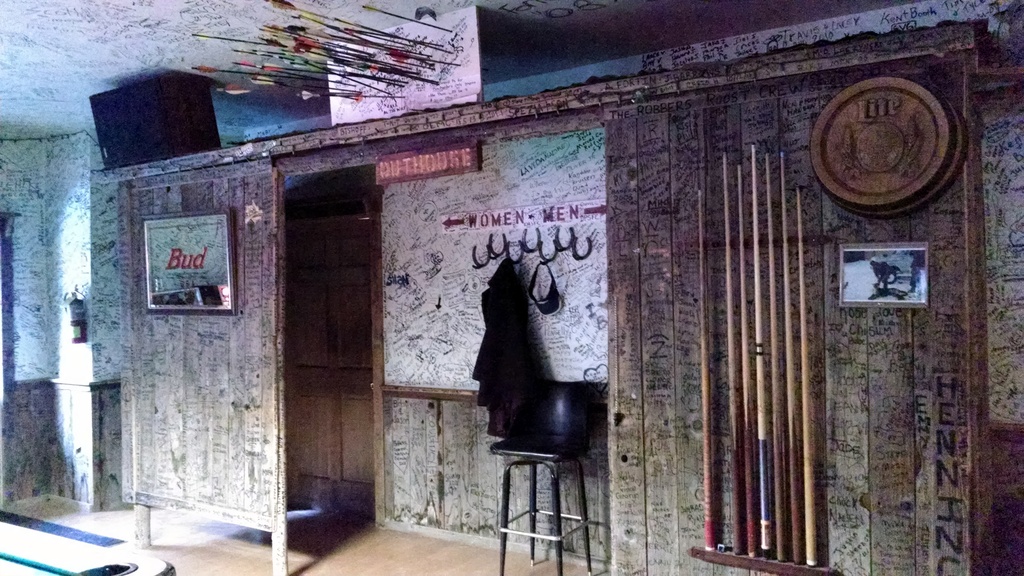
Photo by Peter Matusov
After a reunion with the gang, we decide on camping arrangements. We decide to take the easy route and head to a National Forest campground just south of town, where we build a fire and prepare dinner. I make my new trail standard: red curry and tofu on the Snow Peak cast iron, which does a passible job as a wok. The traditional shots of The Glenlivet are poured and we stay up late into the night, re-telling campfire favorites and a few new stories from the two years that have passed since our last trip together. We'll begin an incredible day of off-road driving in the morning but for now, it's time to stare at the burning embers and enjoy the camaraderie of long-distance friends.
To be continued.
The plan called for the larger Utah Rovers crew to meet up in Salt Lake and drive northwest but as the date approached, the crowd dwindled. It's hard to take ten days away from family and work and so--in the end--we only had a quorum of amigos for a night of camping and an afternoon of driving. The other nine days were a minimalist affair--just Peter and I driving as a duo through what one of the least populated and most isolated areas of the Lower 48.

The major streams and rivers of the Owyhee desert. Our route took us across most of these.
The Approach
After eleven years of doing these trips, I finally feel like my preparation is becoming systematic. There were no late nights of furious last-minute packing this year. I had my Pelicans planned and packed weeks ahead of time. The week before departure was relaxed and spent making a few tweaks to the 110.
I had sworn never to **** with the factory suspension of this truck but adding the 300Tdi, Husky 10 and Brownchurch onto my old, saggy front springs left my front tires with only a few inches of clearance beneath the fender wells. My shocks were also blown so I decided to replace them with some new OME Nitrochargers and decided to swap springs while I was in there. Following Jack's lead, I went with OME 755s in the rear and 766s in the front. My initial impression of this choice was not good. These springs ride like total crap when unladen on the road--the truck is nearly undriveable as such. Load the truck down with six heavy Pelicans, a fridge, and four full fuel cans, however, and it's a completely different experience. The ride is still mildly harsh in the really rough stuff but the truck sits level when loaded and remains stable on uneven double-track at speed. I like it.
I also ditched the goofy, insufferably hot fiberglass top and installed a MOD-spec PVC Wolf top from Exmoor. It took me quite some time to chase down the new top because mine is a Tithonus 110 and Exmoor believed that the Wolf top was not compatible with my roll cage, which differs slightly from that of the Wolf's. Brian Hall and I suspected that the differences could be overcome and I decided to take a $1,000 bet and airfreight the Exmoor top from the UK. The modifications turned out to be trivial and in short order, my 110 had a new summer get-up:
With the truck sorted, I finally got around to finishing the IWD furniture for my SAM7R and got them installed in time to bring the rifle along. It's a tung oil finish on American walnut. Hardly traditional but neither is the milled SAM7R.
The drive down to the desert was improvisational--Peter and I weren't sure how quickly we'd be going so we decided that he would head north and I would head south and we'd meet someplace in the middle. I avoid interstates so I left pavement as quickly as possible, taking a dirt road that connects the Puget Sound with the Columbia River by way of Mount Saint Helens and Mount Adams:
I camped high in the Cascades that night and continued south into Oregon the next morning, stopping to pick cherries in the Hood River Valley before continuing on to Bend for dinner and a fuel-up. South of Bend, I turned east onto a small state highway and made my way towards US-395, where I would meet Peter.
South-central Oregon is under-appreciated and truly stunning. It is reminiscent of the northern flanks of Utah's Aquarius Plateau with its high-altitude hay farms and lakes and empty roads. I vowed to come back to spend more time in the area but I had miles to cover and it was getting dark and cold. The music for the night was Jerry Jeff Walker's seminal, self-titled 1972 album; I stopped on the side of the road to change into warmer clothes and pressed on into the night.
Late that evening, Peter and I finally crossed paths in tiny Valley Falls, OR. Exhausted from our long days, we decided to forgo campsite hunting and spend the night in a quiet and entirely empty RV park in the center of this one-intersection town. After a quick meal of sausages and a San Diego beer, I set my tent up on the grass and was asleep within minutes.
The first morning after link-up is always my favorite part of a trip. I made my standard trail breakfast--oatmeal--and we studied the map. We had two days to make it the roughly 400 miles to Jarbidge, NV, where we would meet the rest of the gang. We decided on our destination for the day: a promising-looking flat spot on top of a high range overlooking Nevada's Black Rock Desert below.
Heading east out of Lakeview, we crossed the Sheldon National Antelope Refuge and passed herds of skittish pronghorn out in the sagebrush. I thought of Cormac McCarthy and Llewelyn Moss's "heavybarreled .270 on a '98 Mauser action".
Photo by Peter Matusov
Turning south across the desert, we made our way down to Black Rock country and approached the desert range that was our destination.
I did some USGS topo scouting and found an old 4x4 road to the summit. We followed this for a while, passing a dried-up cattle trough and the desiccated remains of a heifer lying next to it. This is tough, unforgiving country.
Shortly past this, we came upon a No Trespassing sign. Looking down the road, we could see a ranch house in the distance and a tractor working a hay field. This is Cliven Bundy country and we thought long and hard about the risks of rolling up on somebody's private homestead and asking for permission to pass through. Unable to decide, we flipped a coin: we would either head in or turn tail and find another route. Heads it was and so we proceeded slowly up the drive, maintaining one hand on the wheel and one on the outside of the door, trying to appear as non-threatening as possible. I spotted the rancher and rolled up to him slowly. "Hi sir, sorry for the tresspass. We're heading up to the summit and I was hoping to follow the road up from your property if you would allow us to pass through.", I sheepishly said. His response was to the point: "No." I apologized and said we would leave the way we came. As we were leaving, he must have decided we were okay because he stopped me to direct us toward a turn-off a few miles off his property where we could find a trail that would eventually make the summit.
Photo by Peter Matusov
The gravel gave way to doubletrack and give us our first taste of Owyhee volcanic travel. It was, at times, quite washed out and rutted. My truck is still running open differentials; unlike my previous D90 where I immediately built it up, I've been proceeding slowly with the 110, focusing on using technique in lieu of equipment when possible. It was slow-going on a few of the steeper stretches of this route. There were a few times when I would have to reverse and make a second run at an obstacle.
We finally gained the summit about an hour before sunset and set about scouting a place to park and camp. There was a more heavily-used area with a pit toilet that the BLM had installed. This area was occupied by some Jeepers with a large herd of kids and women so we continued driving, looking for something a little more quiet. That's when we stumbled upon what might be one of the finer campsites in Northern Nevada:
We set up camp and prepared dinner in the fading light. I fired up my 1964 Coleman stove on the newly-installed tailgate of the 110. This tailgate is my most favorite part of the new soft top setup--in ten years of Defenders, this is my first one with a built-in table.
We ate New York strips and watched an incredible sunset over the desert floor 3,500' below.
Photo by Peter Matusov
After dinner, I tried my best to hang with Peter and drink a little whiskey but I was tired and decided call it an early night. We racked out, Peter on a platform in his Disco and me opting for my Thermarest thrown down on the tub floor of my 110.
The next morning, I wake up and begin my morning routine--heat water and grind coffee in the Zassenhaus, only to realize that I somehow forgot my Frieling french press at home. This was a huge bummer. Trail coffee is one of my most favorite things about doing these trips and I was a long way from a Bed Bath and Beyond. Instead, my Stumptown Hairbender beans were not-so-secretly replaced with Peter's Folgers crystals.
Before breaking camp, we took a hike up to a mountain lake near the summit.
Photo by Peter Matusov
Like a labrador retriever, if there's water, I'm going to swim in it. The lake was snow-fed and quite cold but refreshing on this quickly warming July day. On the way out of the water, I cut my foot deeply on a piece of broken glass. I didn't notice it until I got back to the campsite. I should have taken care of it and patched it up but I didn't and just put my flip-flop back on. This would come back to haunt me in a few days.
260 Miles to Jarbidge
After the hike, breakfast, and loading trucks, we didn't hit the road until 1100. We had a lot of miles to cover before our 1900 rendezvous with the guys in Jarbidge, NV, so we made a swift descent down the trail that runs off the east side of this range.
45 minutes of rough dirt later and we're back on the blacktop for a short time. Our immediate destination is the tiny farming town of Paradise Valley, where we'll hop off the pavement for the run to Jarbidge. Before we can do that, however, Peter needs to fill up.
We make a five mile detour towards Winnemuca where we fill the tanks and buy some Gatorades and snacks. As we're pumping, a local guy in a Jeep Wrangler chats me up with the usual questions about the truck. He asks where we're headed and I tell him and his eyes widen. "Jarbidge? Ha! That's a hell of a long way. You should have left hours ago!".
This comment encouraged us to put the pedal down and make some time. We knew that there was a lot of dirt to drive and we would have to cut photography and eating breaks to a minimum if we wanted to make it by sundown.
The turn-off out of Paradise Valley started off as an improved gravel road through alfalfa farms.
It quickly gave way to a dirt trail strewn with volcanic debris the size of softballs.
About ten miles into this, it became a seldom-used and very rough doubletrack. We reminisced about our 2013 Utah trip how we drove a scarcely-traveled trail to get to a canyon overlook I'd scouted. It felt so hardcore to drive those five miles of track back then but now we were discovering that what was a rarity in Southern Utah is just the normal reality out here. The track we were on had not been travelled in some time, yet it continued on for over almost thirty miles like this.
This land is empty--really empty. There are no people and no ranches that we can see; even cattle are scarce out here in the heart of this desert. We eventually come along the remains of a 160 year-old old ranch house and stop just long enough to take a few photos and eat a quick handheld snack of cold cuts from the fridges.
The trail out here is covered in moon dust. I imagine the morass that it must become after a downpour but not today--there's barely a cloud in sight. To keep cool, I run with the back window rolled up. This creates a vacuum in the truck that sucks huge clouds of dust and exhaust into the truck constantly. My eyes are red and swollen and my arms turn into mud when the sweat mixes with the powder. If I want to check the GPS or check the time on my watch, I must wipe their faces with my finger first. The steering wheel even becomes difficult to grip because of the fine particles that coat it. Not wanting to scour my sweet new VDO gauges, I leave their lenses untouched and blow air on them if I need to check a reading.
We eventually come to a section of pavement south of Mountain City, NV and turn south. It's short-lived, however--a half mile later and we're back on dirt. It's been nearly two hundred miles since we last touched pavement and it will be nearly two hundred more before we touch it again.
The flatness of the Great Basin soon gives way to a slow and steady climb up the Jarbidge mountains. The cut on my foot is beginning to hurt so I stop taking photos and mostly stay in the truck when Peter takes his.
Photo by Peter Matusov
Finally, at around 1900 and over 220 miles of dirt travel, we reach Jarbidge. I am beyond filthy and thoroughly road-weary.
For those that have never been here, the best way I can describe the place is this: if you pulled a bunch of salty retirees out of a Florida trailer park and brought them to an old mountain mining town 40 miles off the pavement, you would have something approximating the place. People start drinking early here and they drink all day. Pulling into town, we headed for the Outdoor Inn, Jarbidge's summertime bar. Jason's and Kevin's trucks are parked out front and we go inside, getting a chorus of whoops from the quite-drunk locals when they see us dirtbags stroll in.
As you can see, the Outdoor Inn is one of those places that's way off the beaten track but still somewhat civilized and frequently visited. Its existence elicits an amazement from its visitors that compels them to write their names on the walls.
Photo by Peter Matusov
After a reunion with the gang, we decide on camping arrangements. We decide to take the easy route and head to a National Forest campground just south of town, where we build a fire and prepare dinner. I make my new trail standard: red curry and tofu on the Snow Peak cast iron, which does a passible job as a wok. The traditional shots of The Glenlivet are poured and we stay up late into the night, re-telling campfire favorites and a few new stories from the two years that have passed since our last trip together. We'll begin an incredible day of off-road driving in the morning but for now, it's time to stare at the burning embers and enjoy the camaraderie of long-distance friends.
To be continued.
Last edited:

